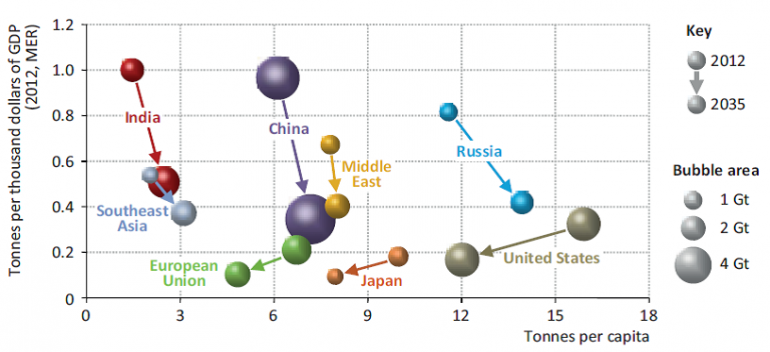An Abbott global emissions fail
Yesterday Prime Minister Tony Abbott stated that his government has no intention of going beyond the minimum target to reduce emissions by 5 per cent by 2020.
He told the press:
“We will meet our 5 per cent emissions reduction target but this government has made no commitments to go further than that ... we are certainly in no way looking to make further binding commitments in the absence of very serious like-binding commitments in other countries and there’s no evidence of that.”
This makes it abundantly clear that the Coalition government will pay no heed to the analysis recently released by the Climate Change Authority. This suggested that, in fact, there is evidence that other countries are making serious commitments to reduce their emissions, and Australia should up its emission reduction target to at least a 15 per cent cut from 2000 levels.
It’s interesting that while Abbott believes other countries aren’t showing any serious commitment to reduce their emissions, his own environment minister has come to a different conclusion. Tom Arup, of Fairfax Media, reported just a few weeks ago that:
Environment Minister Greg Hunt would not comment on the IPCC report until it is released. But he was confident the world would deal with climate change. ''The reason I am most confident is because the Chinese and the Americans who are the central part of any agreement both have a very strong view,'' he said. ''The most heartening development in the past two years has been China's growing commitment to action from its paramount leadership.''
One shouldn’t pretend for a moment that the world’s governments have now got greenhouse gases under control, but Hunt is right that there are signs of progress. It’s just a whole lot more needs to be done.
The International Energy Agency released its latest projections for global energy use overnight and it makes for sobering reading. The chart below illustrates its expectation of energy-related carbon emissions under a scenario that takes into account governments' promised energy and climate policy commitments.

Source: International Energy Agency World Energy Outlook 2013
The IEA believes this pathway would result in greenhouse gas concentration over 700ppm by 2100. This gives a mid-range estimate of 3.6 degrees of warming (over pre-industrial). But perhaps more importantly carries nearly a one-in-10 chance of catastrophic warming above 7 degrees that would make significant areas of the globe uninhabitable because of heat stress (see this journal article by Steven Sherwood and Matthew Huber).
It’s not a good outcome. But it doesn’t mean other countries are doing nothing to reduce emissions and Australia is somehow out there leading.
Across the OECD of nations, of which Australia is a member, emissions will decline by 16 per cent to 2035 based on current promises. Japan will reduce its per capita energy related carbon emissions from 10 tonnes of CO2 to about 8, and Europe’s will decline from 7 to 4 tonnes. Also, China’s will barely grow – from 6 to about 7 tonnes – in spite of simultaneously raising hundreds of millions out of poverty. By comparison, under the 5 per cent cut, Treasury estimates Australia’s energy emissions will be about 15 tonnes per person in 2020.
Energy-related CO2 emissions per capita and CO2 intensity in selected regions in the New Policies Scenario.

Source: International Energy Agency World Energy Outlook 2013
The IEA notes that progress has already made on a series of emission reduction quick wins they recommended in just June this year. Since then President Obama has announced a Climate Action Plan which the IEA notes makes “strong action” on these areas. In addition, both China and the US have signed an agreement to co-operate on raising efficiency in transport and power sectors. And the World Bank and other major lending institutions to the developing world have announced they will no longer finance coal-fired power stations unless there is no other practical alternative.
The IEA foresees that if governments follow-thorough with their policy commitments, renewables will make-up half of the increase in total generation to 2035. This sees them becoming the second-largest source of electricity before 2015 and approaching coal as the primary source by 2035. Almost two-thirds of the increase in renewable power generation is in non-OECD countries. The increase in China is more than that in the European Union, US and Japan combined.
To say there is “no evidence” of other countries making significant commitments to control their greenhouse gas emissions just doesn’t bear scrutiny. They may be inadequate to contain the risks of dangerous climate change, but are no worse than Australia’s 5 per cent reduction pledge.
Abbott doesn’t even need to consult the Climate Change Authority to learn that. Instead, he could just ask his own environment minister.
*EDIS: Food prices and the carbon cost myth, November 12.
















